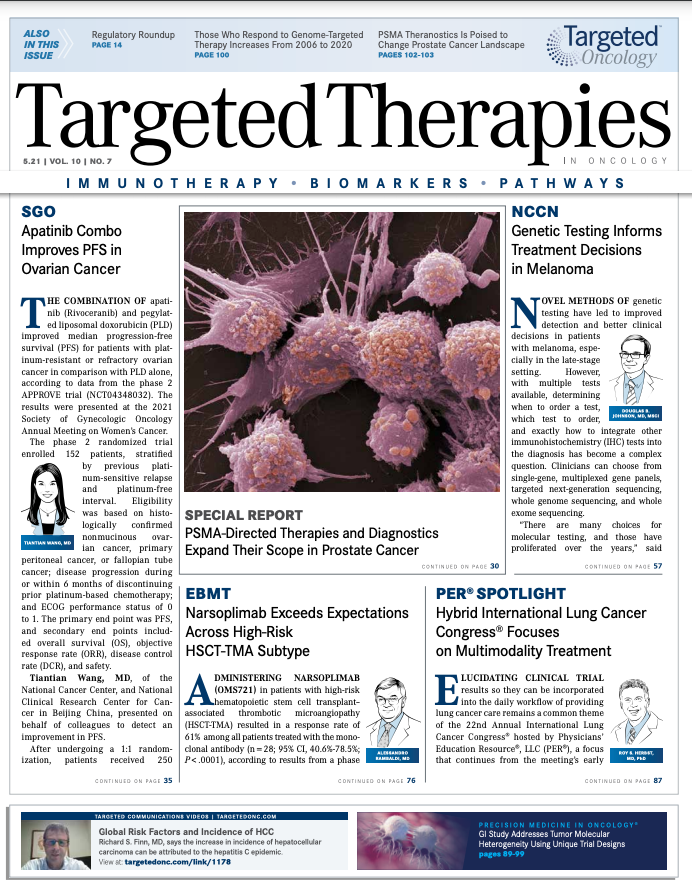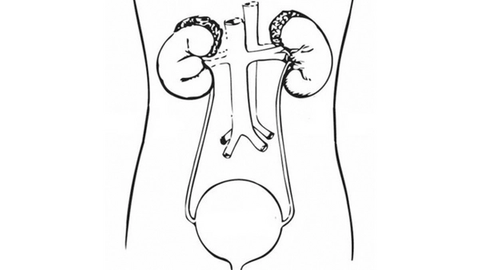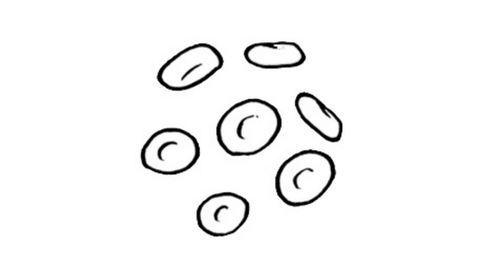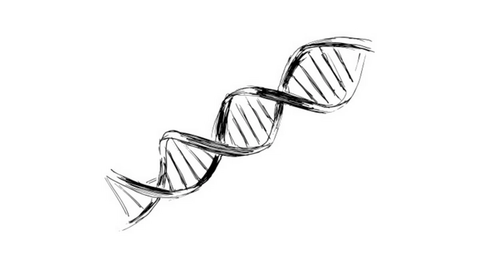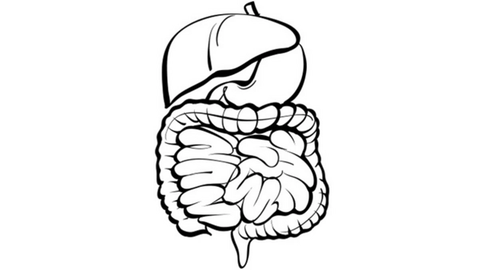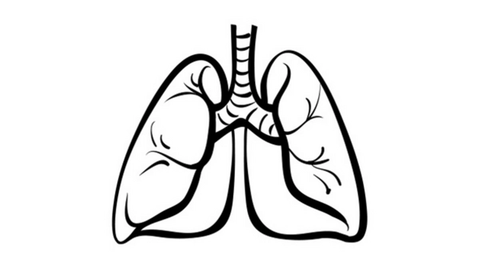Genetic Testing Informs Treatment Decisions in Melanoma
Novel methods of genetic testing have led to improved detection and better clinical decisions in patients with melanoma, especially in the late-stage setting.
Douglas B. Johnson, MD, MSCI

Novel methods of genetic testing have led to improved detection and better clinical decisions in patients with melanoma, especially in the late-stage setting. However, with multiple tests available, determining when to order a test, which test to order, and exactly how to integrate other immunohistochemistry (IHC) tests into the diagnosis has become a complex question. Clinicians can choose from single-gene, multiplexed gene panels, targeted next-generation sequencing, whole genome sequencing, and whole exome sequencing.
“There are many choices for molecular testing, and those have proliferated over the years,” said Douglas B. Johnson, MD, MSCI, during a presentation at the National Comprehensive Cancer Network 2021 Virtual Annual Conference.1 Johnson provided an overview of the assays available and sequencing of molecular tests according to mutation type.
For patients with stage III to stage IV disease, genetic analysis including BRAF or KIT mutation status is appropriate for patients being considered for targeted therapy (SIDEBAR see page 65), or if mutational status is relevant to eligibility, for participation in a clinical trial.2
BRAF V600E Mutation
The most common point mutation in patients with melanoma is V600E, which is harbored in the BRAF gene. The gene is found in approximately 40% to 50% of patients with advanced melanomas, making molecular testing for BRAF mutations a priority to determine the course of therapy. Targeted therapies with BRAF and MEK inhibitors have resulted in long-term treatment benefit in patients with BRAF V600E-mutated melanoma.3
Any patient who presents with stage III or IV melanoma is an appropriate candidate for testing; patients who are eligible for enrollment in a clinical trial also are candidates, Johnson said.
Next-generation sequencing (NGS) assays are likely to be most sensitive and appropriate, as well as single-gene or multigene polymerase chain reaction platforms. Some discussion has centered around the use of the IHC test for BRAF V600E because it has a sensitivity of 89.2%, specificity of 96.2%, and positive predictive value of 97.1%.4
“For example, if you have a positive V600E IHC test, you can act on that information and treat the patient with BRAF and MEK inhibitors, but confirmation is recommended,” said Johnson, an associate professor in the Department of Medicine at Vanderbilt University Medical Center in Nashville, Tennessee. He recommended confirming the findings of the test, whether positive or negative, because the test can miss the basic mutation. “It can also miss the V600K mutation and other less common mutations,” Johnson added.
BRAF Non-V600 Alteration
Johnson noted that BRAF non-V600 alterations appear in up to 5% of melanomas and can be a mix of exon 11 and exon 15 mutations and fusions. It is appropriate to test for these alterations in stage IV melanoma and to choose an NGS assay because a single codon assay is unlikely to detect this alteration.
Although there are not as much data for these mutations as there are with the BRAF V600 mutations, the rationale for testing is based on case reports of responses of these mutations to either MEK inhibitors or BRAF and MEK inhibitors.5-7
MEK inhibitor activity appears to be a melanoma-specific phenomenon, with a 3% response rate in non-selected tumors reported in the National Cancer Institute Molecular Analysis for Therapy Choice (NCIMATCH) trial (NCT02465060).8 In a study using a MATCH protocol,9 genomic profiling was performed on tumor samples from patients with solid tumors and lymphomas progressing on standard therapies or with no standard treatments.
Patients with prespecified fusions and non-V600 mutations in BRAF were assigned to subprotocol R from NCIMATCH. The primary end point was objective response rate. Fifty patients were assigned, with 32 patients receiving treatment with trametinib (Mekinist). Of these, 1 patient had a BRAF fusion and 31 had BRAF mutations (13 and 19 with class 2 and 3 mutations, respectively).
Investigators reported 0 complete responses and 1 patient (3%) with confirmed partial response (patient with breast ductal adenocarcinoma with BRAF G469E mutation). Stable disease was best response observed in 10 patients. Median progression-free survival (PFS) was 1.8 months, and median OS was 5.7 months. Exploratory subgroup analyses showed that patients with colorectal adenocarcinoma (n=8) had particularly poor PFS.
KIT Mutation
KIT mutations can occur in 2% to 3% patients with 10% to 15% being acral melanoma and 10% to 15% being mucosal melanomas. Johnson highlighted 2 studies that evaluated the effects of imatinib mesylate (Gleevec) in patients with melanoma whose tumors harbor KIT mutations.10, 11
“Several phase 2 studies show that imatinib can be active in patients who have these mutations, especially exon 11 and 13 mutations, with response rates for those particular mutations of [approximately] 50%,” Johnson said. “Unfortunately, it has not been terribly durable, with [approximately] 6 months [for] duration of response. We’ve also seen isolated responses for sunitinib [Sutent] and nilotinib [Tasigna].”
NRAS Mutation
NRAS is the driver mutation after BRAF, observed in approximately 15% of melanomas. It affects codon 12, 13, and 61. Johnson recommends NGS testing for this mutation in stage IV disease. Although patients have a poor prognosis, NGS results can help rule out other common drivers. Johnson added that, on occasion, there have been responses to binimetinib (Mektovi).
The phase 3 NEMO trial (NCT01763164) evaluated the efficacy and safety of binimetinib compared with dacarbazine in patients with advanced NRAS-mutant melanoma.12
Investigators reported that the median PFS was 2.8 months (95% CI, 2.8-3.6) in the binimetinib group and 1.5 months (1.5-1.7) in the dacarbazine group (HR, 0.62; 95% CI, 0.47-0.80; P < .001).
NTRK Fusion
This gene is seen in only approximately 1% of melanoma cases. It is appropriate to use NGS tests in stage IV disease because this type of fusion is highly responsive to larotrectinib (Vitrakvi) and entrectinib (Rozlytrek).
PD-L1 Expression Although this is a very important biomarker for a number of different cancers, it is currently not recommended for treatment ecision-making for melanoma. A number of studies have shown a trend toward higher response rates for anti–PD-1 monotherapy in positive patients. In the phase 3 CheckMate 066 study (NCT01721772), nivolumab (Opdivo) was evaluated in previously untreated patients with advanced melanoma.13 In the study, 418 patients with melanoma without a BRAF mutation received nivolumab or dacarbazine.
Investigators reported an OS rate of 72.9% (95% CI, 65.5%-78.9%) in the nivolumab arm vs 42.1% (95% CI, 33.0%-50.9%) in the dacarbazine arm (HR, 0.42; 99.79% CI, 0.25-0.73; P<.001). Median PFS was 5.1 months in the treatment arm vs 2.2 months in the control arm (HR, 0.43; 95% CI, 0.34- 0.56; P < .001).
In the CheckMate 067 study (NCT01844505), nivolumab plus ipilimumab vs nivolumab alone resulted in longer progression-free and OS rates than ipilimumab alone in patients with advanced melanoma.14
After 5 years, the median OS was more than 60.0 months (median not reached) in the nivolumab plus ipilimumab group and 36.9 months in the nivolumab group vs 19.9 months in the ipilimumab group (HR for death with nivolumab plus ipilimumab vs ipilimumab, 0.52; HR for death with nivolumab vs ipilimumab, 0.63). OS at 5 years was 52% in the nivolumab plus ipilimumab group and 44% in the nivolumab group, as compared with 26% in the ipilimumab group.
“Patients with low PD-L1 seem to have more benefit overall with combination immunotherapy, whereas patients with high PD-L1 have very similar outcomes when treated with either combination immunotherapy or single agent immunotherapy,” Johnson said.
References:
1. Johnson DB. Molecular testing for cutaneous melanoma: how, when, what, and why? Presented at: NCCN 2021 Virtual Annual Conference; March 18-20, 2021; virtual.
2. NCCN. Clinical Practice Guidelines in Oncology. Melanoma: cutaneous; version 2.2021. Accessed April 23, 2021. https://bit.ly/3xn3BgG
3. Cheng L, Lopez-Beltran A, Massari F, MacLennan GT, Montironi R. Molecular testing for BRAF mutations to inform melanoma treatment decisions: a move toward precision medicine. Mod Pathol. 2018;31(1):24-38. doi:10.1038/modpathol.2017.104
4. Long GV, Wilmott JS, Capper D, et al. Immunohistochemistry is highly sensitive and specific for the detection of V600E BRAF mutation in melanoma. Am J Surg Pathol. 2013;37(1):61-65. doi:10.1097/PAS. 0b013e31826485c0
5. Hutchinson KE, Lipson D, Stephens PJ, et al. BRAF fusions define a distinct molecular subset of melanomas with potential sensitivity to MEK inhibition. Clin Cancer Res. 2013;19(24):6696-6702. doi:10.1158/1078- 0432.CCR-13-1746
6. Botton T, Yeh I, Nelson T, et al. Recurrent BRAF kinase fusions in melanocytic tumors offer an opportunity for targeted therapy. Pigment Cell Melanoma Res. 2013;26(6):845-851. doi:10.1111/pcmr.12148
7. Dahlman KB, Xia J, Hutchinson K, et al. BRAF(L597) mutations in melanoma are associated with sensitivity to MEK inhibitors. Cancer Discov. 2012;2(9):791-797. doi:10.1158/2159-8290.CD-12-0097
8. Flaherty KT, Gray RJ, Chen AP, et al; NCI-MATCH Team. Molecular landscape and actionable alterations in a genomically guided cancer clinical trial: National Cancer Institute Molecular Analysis for Therapy Choice (NCI-MATCH). J Clin Oncol. 2020;38(33):3883-3894. doi:10.1200/ JCO.19.03010
9. Johnson DB, Zhao F, Noel M, et al. Trametinib activity in patients with solid tumors and lymphomas harboring BRAF non-V600 mutations or fusions: results from NCI-MATCH (EAY131). Clin Cancer Res. 2020;26(8):1812- 1819. doi:10.1158/1078-0432.CCR-19-3443
10. Garrido MC, Bastian BC. KIT as a therapeutic target in melanoma. J Invest Dermatol. 2010;130(1):20-27. doi:10.1038/jid.2009.334
11. Hodi FS, Corless CL, Giobbie-Hurder A, et al. Imatinib for melanomas harboring mutationally activated or amplified KIT arising on mucosal, acral, and chronically sun-damaged skin. J Clin Oncol. 2013;31(26):3182-3190. doi:10.1200/JCO.2012.47.7836
12. Dummer R, Schadendorf D, Ascierto PA, et al. Binimetinib versus dacarbazine in patients with advanced NRAS-mutant melanoma (NEMO): a multicentre, open-label, randomised, phase 3 trial. Lancet Oncol. 2017;18(4):435-445. doi:10.1016/S1470-2045(17)30180-8
13. Robert C, Long GV, Brady B, et al. Nivolumab in previously untreated melanoma without BRAF mutation. N Engl J Med. 2015;372(4):320-330. doi:10.1056/NEJMoa1412082
14. Larkin J, Chiarion-Sileni V, Gonzalez R, et al. Five-year survival with combined nivolumab and ipilimumab in advanced melanoma. N Engl J Med. 2019;381(16):1535-1546. doi:10.1056/NEJMoa1910836
